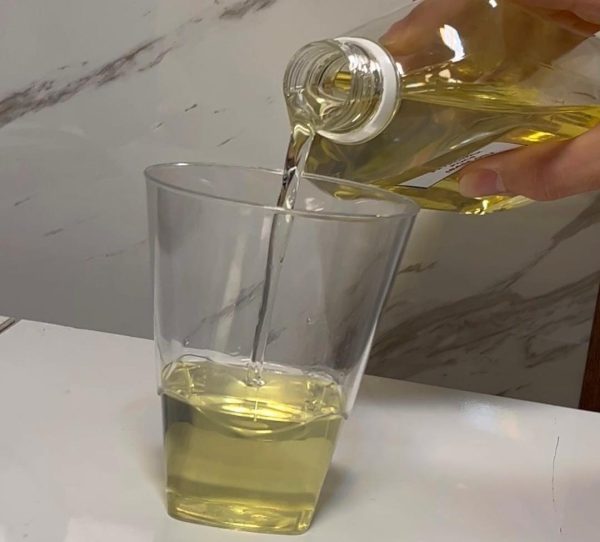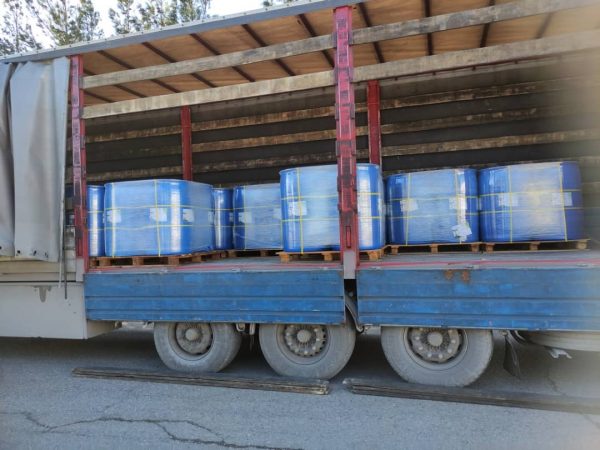industrial liquid paraffin

mineral oil
Industrial Liquid Paraffin Definition
Industrial liquid paraffin, also known as mineral oil, is a highly refined petroleum derivative. Crude oil is distilled first at atmospheric pressure and then under high vacuum to yield vacuum distillates and residual fractions that can be further refined to mineral oils. Mineral oils refined from petroleum crude oils are complex and variable mixtures of straight and branched-chain paraffinic, naphthenic (cycloparaffinic), and aromatic hydrocarbons having carbon numbers of 15 or more and boiling points in the range of 300–600°C.
The hydrocarbon composition and physical characteristics of a mineral oil depend on both the composition of the original crude oil and the processes used during refining (e.g. solvent extraction, hydro-treatment). Production processes of mineral oils have changed substantially over time. In the past, many mineral oils were only mildly refined and contained significant levels of polycyclic aromatic hydrocarbons (PAHs).
Acid treatment was initially used to remove PAHs and other impurities and to improve the technical properties of the finished oils. In recent decades, acid treatment has largely been replaced by extensive refining with solvent extraction and/or hydro-treatment, which has further reduced the level of PAHs and other contaminants. Mineral oils have been produced by means of the severe hydro-treatment procedure since the 1960s. Regulatory pressures in the USA further encouraged the move to highly refined mineral oils in the mid-1980s.
Mineral oil is the most abundant group of lubricants and is divided into paraffinic and naphthenic oils.
Paraffinic oils are characterized by the CnH(2n+2) chain. They are relatively stable at high temperatures, contain a large proportion of dissolved paraffin and therefore tend to solidify at higher temperatures than naphthenic oils.
Naphthenic oils are characterized by the formula CnHC2rO and often contain a high proportion of asphalt. They tend to be more stable than paraffinic oils at high temperatures and contain little or no paraffin and therefore remain liquid at low temperatures. The viscosity of naphthenic oils varies more with temperature change than its paraffinic counterpart and they are generally considered to have lesser performance at temperatures higher that 65°C, although modern refining methods have helped to reduce this performance gap.
Over time, industrial liquid paraffin decreases its ability to do the job, which is to lubricate surfaces and transfer heat away from the area being lubricated.
Mineral oil comes from refining petroleum through a process of atmospheric distillation of crude oil.
Mineral oils are notable for their viscosity, and their ability to dissipate heat. Mineral oil, as it currently comes out of the earth’s crust, is a more or less dense fluid table of a Its color can vary from light yellow to black, and it gives off a characteristic petroleum odour. It often appears to carry sand and water.
Liquid Paraffin Industrial grade Applications
A wide variety of industrial liquid paraffin -containing products including lubricants as well as products intended for non-lubricant purposes are manufactured for different applications. Lubricant products include engine oils, transmission fluids, gear oils, hydraulic fluids, as well as metalworking fluids (also known as metal-removal fluids). Metalworking fluids may be different from other mineral oil-containing products due to the types of additives used, the additive treatment rates, and contaminants – including those of microbial origin – that are associated with use.
“Non-lubricant” products include agricultural spray oils, printing inks, tyre oils, etc. Oil mists or aerosols can arise from the use of mineral oil both as lubricant and as non-lubricant. In practice, oil aerosols may be generated by several mechanisms such as aeration, contact with a fast-moving surface, or by heating. Important applications associated with potential generation of oil aerosols are metal-working, textile machinery, rock drills, aerosol lubrication, agriculture sprays, concrete mould release agents, corrosion preventatives, printing inks, rubber extenders, lubricant-blending in open processes, and applications in food and pharmaceutical preparations . The particle size of the mists, aerosols or fogs is likely to differ for each of these processes.
As a brief of industrial liquid paraffin uses:
1. Lubricant: It is used as a lubricant for machinery, particularly in food processing industries where food-grade lubricants are required.
2. Coolant and Hydraulic Fluids: Due to its stability and non-reactivity, it is used as a coolant and hydraulic fluid in various industrial equipment.
3. Plasticizers and Extenders: In the production of rubber and plastics, liquid paraffin acts as a plasticizer, making materials more flexible.
4. Release Agent: It is used to prevent materials from sticking to molds and other surfaces during manufacturing processes.
5. Insulating Oil: In the electrical industry, it serves as an insulating oil in transformers and capacitors.
Mineral Oil (Industrial Liquid Paraffin) Packing

Mineral Oil Packing
Industrial liquid paraffin, also known as white mineral oil, is typically packed in various forms depending on the quantity and the specific requirements of the industry using it. Here are common packaging methods for industrial liquid paraffin:
1. Drums:
– Standard Metal Drums: Usually 200-liter (55-gallon) capacity.
– Plastic Drums ( PE Drum ): Also available in similar sizes for easier handling and corrosion resistance.
2. Intermediate Bulk Containers (IBCs):
– IBC Totes: Typically 1000 liters (275 gallons) capacity, suitable for large-scale industrial use. They have a pallet base for easy forklift handling and often include a top fill port and a bottom drain valve.
3. Jerry Cans:
– Smaller Plastic or Metal Jerry Cans: Typically ranging from 20 liters to 50 liters for smaller or more controlled usage.
4. Tanker Trucks:
– For very large quantities, liquid paraffin can be transported in bulk using tanker trucks designed for liquid transport.
5. Smaller Containers:
– Bottles or Jugs: For laboratory or smaller industrial applications, ranging from 1 liter to 10 liters.
Each packaging type has its own set of advantages and suitability based on factors like the scale of usage, handling and storage requirements, and transportation logistics. For example, drums and IBCs are ideal for bulk storage and transport, while jerry cans and smaller containers are more suitable for ease of use and handling in smaller quantities.
Industrial Liquid Paraffin Specification
| NO | PROPERTIES | Limits | Specification | Result | ASTM STANDARDS |
|---|---|---|---|---|---|
| 1 | Density at 15 ֯C | - | To Report | 0.84 | D-1289 |
| 2 | Viscosity at 40 ֯C, Cst | Min-Max | 18 to 21 | 18.5 | D-445 |
| 3 | Viscosity at 100 ֯C, Cst | Min-Max | 4 to 5 | 4.40 | D-445 |
| 4 | Viscosity Index | Min | 120 | 135 | D-2270 |
| 5 | Pour Point C | Max | -6 | -12 | D-97 |
| 6 | Flash Point C | Min | 200 | 205 | D-92 |

